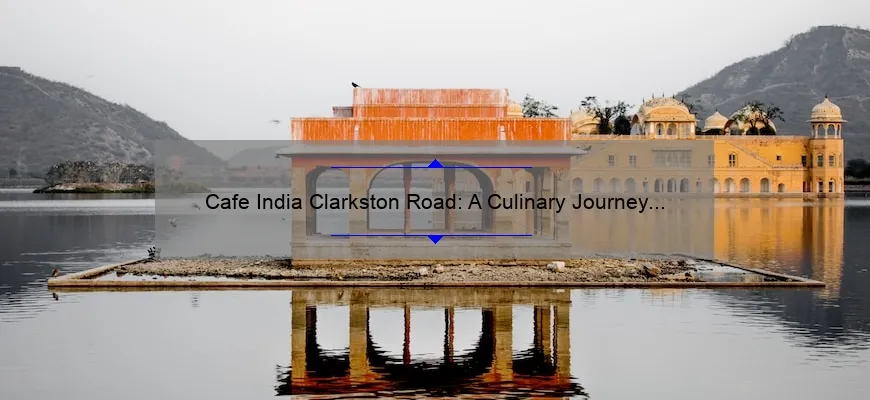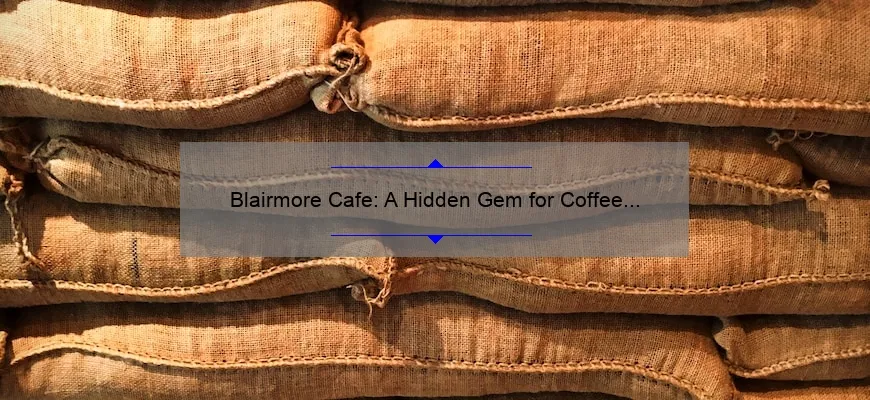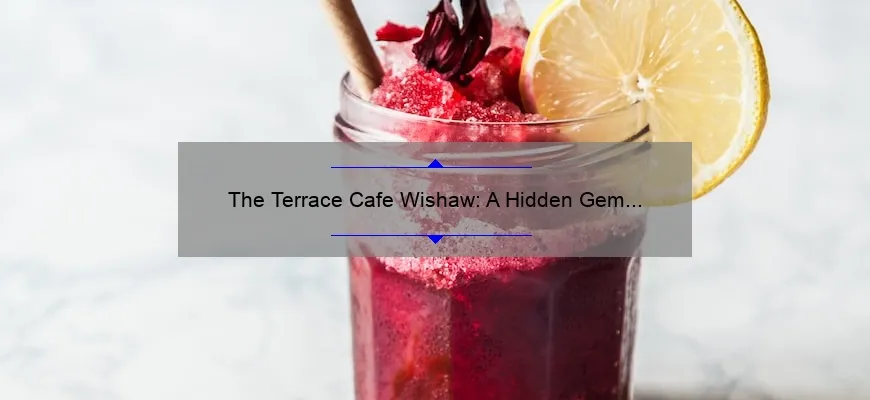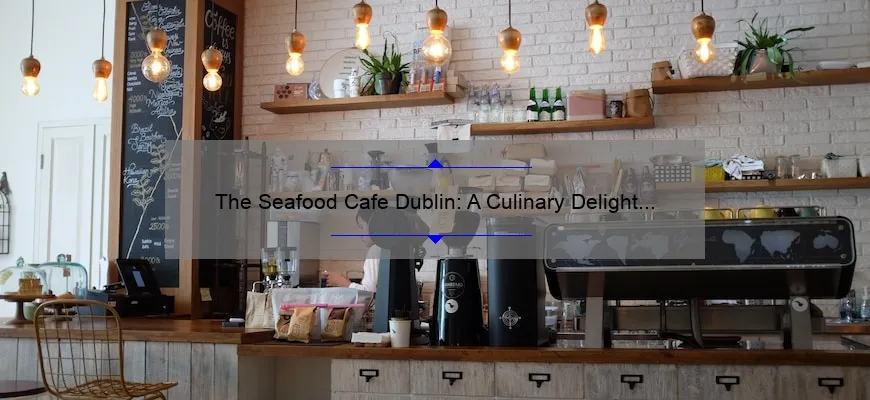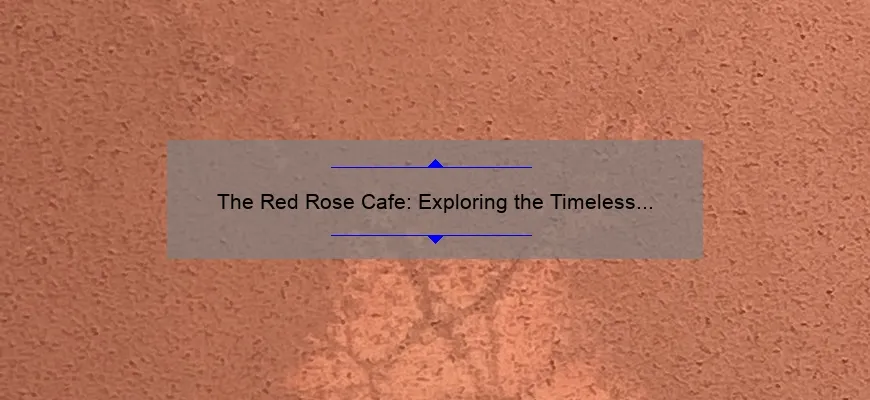- Short answer: Ducati Cafe Racer
- The Evolution of Ducati Cafe Racers: A Brief History and How They Became Iconic
- How to Build Your Own Ducati Cafe Racer: Step-by-Step Guide for Motorcycle Enthusiasts
- Frequently Asked Questions about Ducati Cafe Racers: Answering Your Queries on Maintenance, Performance, and More
- Unveiling the Secrets of Successful Ducati Cafe Racer Modifications: Tips and Tricks from Experts
- Exploring the Thrilling World of Ducati Cafe Racer Racing: Unforgettable Experiences on the Track
- Breaking Down the Anatomy of a Ducati Cafe Racer: Understanding Its Unique Features and Design
Short answer: Ducati Cafe Racer
Ducati Cafe Racers are stylish motorcycles inspired by the racing bikes of the 1960s and 1970s. They combine classic design elements with modern performance features, making them popular amongst motorcycle enthusiasts seeking a vintage look with contemporary engineering capabilities.
The Evolution of Ducati Cafe Racers: A Brief History and How They Became Iconic
Ducati Cafe Racers have a fascinating evolution that mirrors the spirit of rebellion and freedom associated with these iconic motorcycles. From their early beginnings as stripped-down roadsters to becoming an emblem of coolness and style, Ducati Cafe Racers have truly left a mark on the motorcycle world.
In order to understand the essence of Ducati Cafe Racers, let’s take a journey back in time to their origins. The concept of the cafe racer can be traced back to 1950s England when young speed enthusiasts would modify their motorcycles for sprint races between cafes. These rebellious riders sought faster, lighter bikes that could handle tight corners and straightaways alike.
Fast-forward to Italy in the 1960s, where Ducati emerged as a prominent motorcycle manufacturer known for its racing pedigree and high-performance machines. It was during this era that Ducati started experimenting with cafe racer designs, drawing inspiration from both British motorcycles and their own racing heritage.
The first generation of Ducati Cafe Racers were born during the late 1960s and early 1970s. These bikes featured a stripped-down aesthetic characterized by clip-on handlebars, rearset footpegs, single-seat configurations, and upswept exhaust pipes – all aimed at reducing weight while maximizing performance. These minimalistic yet aggressive modifications became synonymous with cafe racers and set the stage for what was to come.
However, it wasn’t until the 1980s that Ducati truly made its mark on cafe racer history with the introduction of their iconic Monster series. With its unmistakable trellis frame design and powerful V-twin engine, the Monster revolutionized the concept of a modern cafe racer. The M900 launched in 1993 garnered significant attention with its muscular yet understated styling and potent performance capabilities.
Since then, Ducati has continued to refine and evolve its cafe racers into masterpieces of engineering prowess and aesthetic appeal. Modern Ducati Cafe Racers combine the perfect fusion of retro-inspired design elements and cutting-edge technology. From the Monster to the Scrambler and Streetfighter series, each model is painstakingly crafted to embody the true essence of cafe racer culture.
One of the key factors that contributed to the iconic status of Ducati Cafe Racers is their ability to strike a balance between form and function. These motorcycles are not just eye-catching pieces of art, but they also deliver an adrenaline-fueled riding experience like no other. The roar of a Ducati V-twin engine combined with razor-sharp handling and responsive controls makes every ride an exhilarating adventure.
Moreover, Ducati’s commitment to innovation has ensured that their cafe racers stay ahead of the pack in terms of performance. With advanced features such as adjustable suspension systems, state-of-the-art electronics, and super lightweight materials, Ducati continues to push boundaries and redefine what it means to be a cafe racer.
Beyond their technical specifications, Ducati Cafe Racers have become cultural icons thanks to their association with legendary riders and pop culture references. Iconic figures like Mike Hailwood’s memorable victory at the Isle of Man TT on a Ducati in 1978 solidified the brand’s place in motorcycle history. Furthermore, movies like “The Motorcycle Diaries” featuring a Ducati cafe racer have further propelled these motorcycles into popular consciousness.
In conclusion, Ducati Cafe Racers have evolved from humble beginnings as modified roadsters for street races into timeless symbols of rebellion and style. With their rich heritage rooted in speed-driven customization and legendary racing success, these motorcycles continue to captivate enthusiasts around the world. Through relentless innovation and attention to detail, Ducati has transformed its cafe racers into masterpieces that seamlessly blend form and function while embodying the rebellious spirit that defines this unique subculture.
How to Build Your Own Ducati Cafe Racer: Step-by-Step Guide for Motorcycle Enthusiasts
Are you a motorcycle enthusiast looking to take your passion for two-wheeled machines to the next level? Have you ever dreamt of owning and riding your very own Ducati Cafe Racer, but thought it was out of reach? Well, we’ve got some exciting news for you! In this step-by-step guide, we will walk you through the process of building your very own Ducati Cafe Racer. So strap on your tool belt and rev up your imagination, because by the end of this blog post, you’ll be well on your way to becoming the proud owner of a custom-made cafe racer that will turn heads wherever it goes.
Step 1: Choose Your Base Model
The first step in any build is selecting the right base model. For a Ducati Cafe Racer, there are several classic models to choose from such as the Ducati Monster or the Ducati Scrambler. Consider factors such as engine size, frame geometry, and overall aesthetic when making your decision.
Step 2: Strip It Down
Now that you have chosen your base model, it’s time to strip it down to its bare essentials. Remove unnecessary parts like fenders, mirrors, and passenger seats. This not only reduces weight but also gives your cafe racer that sleek and minimalist look characteristic of this style.
Step 3: Upgrade Suspension and Brakes
To ensure optimal performance and handling, upgrading suspension components like forks and shocks is crucial. Pair these with high-performance brakes tailored for track performance, ensuring superior stopping power.
Step 4: Swap Out Exhaust System
One essential modification for any cafe racer build is installing a new exhaust system. Look for options that deliver both enhanced performance and an unmistakable throaty growl that has become synonymous with cafe racers.
Step 5: Reconfigure Handlebars
Cafe racers are known for their aggressive riding position achieved through lowered handlebars. Choose clip-on handlebars or low-rise, drag-style bars to achieve the desired aesthetic and improved control.
Step 6: Tackle the Bodywork
The bodywork is where your creative vision can truly come to life. Design sleek and aerodynamic lines by incorporating a custom-made seat cowl, front fairing, and tank. This is your chance to infuse your personality into your Ducati cafe racer.
Step 7: Paint Job
Now that you’ve nailed the mechanical aspects of your build, it’s time to give it a stunning paint job. Stick to classic cafe racer colors like gloss black, racing green, or metallic silver for an authentic vintage look. Alternatively, go bold with vibrant custom colors that reflect your individual style.
Step 8: Finishing Touches
Don’t forget about the small details! Add finishing touches such as retro-inspired decals, custom grips, and sleek LED lighting to elevate the visual appeal of your Ducati Cafe Racer.
Remember, building your own Ducati Cafe Racer is a labor of love that requires time, patience, and a lot of dedication. But don’t be discouraged – every step of this journey will be worth it when you finally hit the open road on a machine that represents your creativity and passion.
So there you have it – our step-by-step guide for building your very own Ducati Cafe Racer. We hope this detailed explanation has inspired you to embark on this thrilling DIY adventure. Now get out there and start turning those wrenches!
Frequently Asked Questions about Ducati Cafe Racers: Answering Your Queries on Maintenance, Performance, and More
As aficionados of the two-wheeled world, we understand that enthusiasts love to dive deep into the details about their beloved Ducati Cafe Racers. From maintenance tips to performance enhancements, there are plenty of questions that arise when it comes to owning and riding these captivating machines. In this blog post, we aim to provide you with comprehensive answers to some frequently asked questions about Ducati Cafe Racers.
Maintenance Queries:
1. How often should I change the oil in my Ducati Cafe Racer?
Regular oil changes are vital for maintaining the health and longevity of your motorcycle’s engine. As a general rule of thumb, it is recommended to change your Ducati’s oil every 3,000-5,000 miles or at least once a year if you ride less frequently.
2. Should I perform regular valve adjustments on my cafe racer?
Valve adjustments play a significant role in keeping your Ducati performing at its best. It is advisable to check and adjust the valves at least once a year or as recommended by your motorcycle’s manufacturer. Regular inspections will ensure optimal combustion and prevent potential damage caused by improperly adjusted valves.
3. Can I perform routine maintenance tasks myself, or should I rely on a professional mechanic?
While basic maintenance tasks like chain lubrication and tire pressure checks can be done at home with proper guidance and tools, it is always beneficial to have an expert eye oversee critical services such as valve adjustments or major engine overhauls. A skilled technician familiar with Ducatis can help identify potential issues early on and offer tailored advice for optimal performance.
Performance Questions:
1. How can I enhance the performance of my Ducati Cafe Racer?
There are several ways you can boost your cafe racer‘s performance depending on your preferences and budget. Upgrading exhaust systems, air filters, and fuel mapping can provide noticeable power gains while maintaining reliability. Additionally, optimizing suspension settings tailored to your riding style can significantly improve handling and overall riding experience.
2. Is it necessary to rejet the carburetor after installing aftermarket exhaust systems?
Replacing stock exhaust systems with aftermarket options alters the back pressure, which may require rejetting the carburetor for optimal fuel-to-air ratio. This ensures proper combustion and prevents issues such as poor throttle response or engine overheating. Consulting a knowledgeable mechanic or utilizing a fuel injection tuning module can help attain the ideal tuning balance.
3. Can I install upgraded brakes on my Ducati Cafe Racer?
Yes, absolutely! Upgrading your motorcycle’s brake system can greatly enhance its stopping power and overall safety. High-quality aftermarket brake pads, steel-braided lines, and larger rotors are popular choices among enthusiasts seeking improved braking performance. However, it is crucial to choose components that are compatible with your specific model to ensure a seamless fit.
More Queries:
1. Are Ducati Cafe Racers suitable for daily commuting?
Ducati Cafe Racers exhibit an unparalleled blend of style and performance; however, their aggressive riding position may not be ideal for long hours of city commuting. The limited seating comfort and focused ergonomics cater more towards spirited rides on twisty roads rather than mundane commutes. Nonetheless, if you have a passion for cafe racers and enjoy shorter urban rides or weekend getaways, a Ducati cafe racer can still offer an exhilarating experience.
2. What are some essential accessories to consider for my cafe racer?
Personalizing your Ducati Cafe Racer with unique accessories is part of the joy of owning one. Here are a few essentials worth considering:
– Clip-on handlebars: These provide an authentic cafe racer look while improving maneuverability.
– Café racer seat: Enhance both aesthetics and comfort by replacing the original seat with a stylish café racer-inspired alternative.
– Rearset foot controls: Repositioning footpegs higher and further back enhances control during spirited rides.
– LED indicators: Upgrade your bike’s lighting system with LEDs for improved visibility and a modern touch.
We hope these detailed answers have helped address some of the most common queries concerning Ducati Cafe Racers. Remember, being knowledgeable about your motorcycle not only enhances your riding experience but also ensures its longevity and performance. So, keep exploring and enjoying the thrilling world of Ducati Cafe Racers!
Unveiling the Secrets of Successful Ducati Cafe Racer Modifications: Tips and Tricks from Experts
Unveiling the Secrets of Successful Ducati Cafe Racer Modifications: Tips and Tricks from Experts
If you’re an avid motorcyclist, chances are you’ve heard of the iconic Ducati brand. Known for their high-performance machines and exquisite Italian craftsmanship, Ducati motorcycles have captured the hearts of riders worldwide. Amongst their enticing range of models, one that stands out is the legendary cafe racer.
The cafe racer has a rich history rooted in post-war England, where bikers sought to enhance their lightweight motorcycles for faster rides between cafes. Today, this distinctive style continues to captivate enthusiasts who dream of converting their beloved Ducatis into stunning cafe racers.
However, achieving a successful Ducati cafe racer modification requires more than wrenching skills. To help you unravel the secrets behind these awe-inspiring transformations, we’ve gathered tips and tricks shared by experts in the field.
1. Maintain the Soul: Before diving into modifications, remember that retaining your bike’s soul is crucial. A true cafe racer should reflect both your personality as a rider and the bike’s heritage. Respect Ducati’s engineering prowess while incorporating subtle modifications that enhance its classic appeal.
2. Suspension Upgrade: Upgrading your suspension is vital for impeccable handling and maneuverability on both city streets and tight corners. Replacing stock forks with adjustable units or installing rear shocks can dramatically improve your ride quality.
3. Weight Reduction: Shedding unnecessary weight plays a pivotal role in transforming a stock motorcycle into an agile cafe racer beast. Replace heavy components with lighter alternatives like carbon fiber parts or aluminum alloy accessories without compromising safety or structural integrity.
4. Tail Tidy & Seat Swaps: The classic cafe racer silhouette demands a sleek tail section accompanied by a slender seat design to nail that iconic look. Consider incorporating tail tidies for clean lines while opting for a seat swap that offers comfort during long rides.
5. Exhaust System Enhancement: An alluring exhaust note is music to a biker’s ears. Upgrading your exhaust system not only amplifies the symphony produced by your Ducati but also boosts performance by improving airflow. Select aftermarket headers and mufflers that complement the bike’s aesthetic while delivering an authoritative growl.
6. Lighting and Electricals: Cafe racers are renowned for their minimalist approach, with clean lines often taking center stage. Ensure your lighting setup follows suit, utilizing sleek LED indicators, small taillights, and a discreet headlight that blends seamlessly into the design.
7. Paint Scheme & Custom Artwork: Elevate your cafe racer‘s visual appeal with a captivating paint scheme or custom artwork. Thoughtfully chosen colors and graphics can transform your Ducati into a head-turning work of art while maintaining its timeless charm.
8. Performance Enhancements: As enticing as aesthetics might be, don’t overlook performance enhancements required to make your cafe racer as thrilling to ride as it is beautiful to behold. Consider upgrading braking systems, exploring ECU remapping options, or installing high-performance air filters for an extra boost.
9. Safety First: While creativity knows no bounds when modifying your Ducati cafe racer, ensure you prioritize safety at every stage of customization. Invest in quality protective gear like helmets, gloves, jackets, and boots to offer maximum protection without compromising style.
10. Trial and Error: Modifying any motorcycle demands patience and experimentation until achieving perfection. Embrace the journey of trial and error while seeking guidance from experienced professionals who have mastered the art of Ducati cafe racer modifications.
In conclusion, transforming your cherished Ducati into a stunning cafe racer requires equal parts skill, passion, and attention to detail. Following these expert tips will set you on the right track towards realizing your two-wheeled dream machine that effortlessly combines heritage with contemporary flair. So go forth with unwavering enthusiasm on this exciting customization journey!
Exploring the Thrilling World of Ducati Cafe Racer Racing: Unforgettable Experiences on the Track
Are you ready to rev up your engines and dive into the exhilarating world of Ducati Cafe Racer Racing? Strap on your helmet, buckle up, and get ready for a wild ride as we explore this thrilling sport that promises unforgettable experiences on the track.
Ducati Cafe Racer Racing is not just a hobby; it’s a lifestyle. It combines the adrenaline-pumping rush of high-speed racing with the timeless elegance and performance of Ducati motorcycles. These sleek machines are built for speed and agility, designed to dominate every twist and turn of the racetrack.
But what exactly makes Ducati Cafe Racer Racing so enticing? Well, let us paint a picture for you. Imagine yourself on the starting line, surrounded by other passionate riders, all eager to push their skills and motorcycles to their limits. The sound of engines roaring fills the air as anticipation builds. As soon as that green light flashes, it’s a race against time – a true battle where only the boldest will prevail.
The sheer power and precision of Ducati bikes make them ideal for this electrifying pursuit. With cutting-edge technology under their sleek exteriors, these mean machines can unleash tremendous horsepower while maintaining complete control at high speeds. The aerodynamic design enhances stability, allowing riders to maneuver through hairpin turns with finesse.
But what truly sets Ducati Cafe Racers apart is their unmistakable style. These two-wheeled masterpieces blend classic nostalgia with modern aesthetics – they are both works of art and performance beasts in equal measure. From retro-inspired color schemes to fine details meticulously crafted by expert hands, each Ducati Cafe Racer is a statement piece that turns heads wherever it goes.
Beyond the thrill of racing itself lies another facet that makes this world so special: community. The bond between riders transcends language barriers or cultural differences – it’s an unspoken understanding rooted in shared passion for speed, adrenaline, and pushing boundaries. You’ll find yourself surrounded by like-minded individuals who share tips, stories, and unforgettable camaraderie both on and off the track.
Whether you’re a seasoned rider or new to the world of motorcycling, Ducati Cafe Racer Racing offers something for everyone. It’s an invitation to challenge your limits, unleash your inner racer, and experience the thrill that comes from mastering every turn and straightaway. But be warned – once you’ve tasted the adrenaline rush of a Ducati Café Racer tearing across the track, there’s no going back. You may find yourself forever addicted to this electrifying world.
So why wait? Grab your riding gear, fuel up your passion for speed, and jump into the thrilling world of Ducati Cafe Racer Racing. Buckle up for unforgettable experiences on the track – it’s time to make some memories that will last a lifetime.
Remember, life is too short not to chase your dreams at full throttle – so start your engines and let Ducati Cafe Racer Racing take you on an exhilarating journey like no other!
Breaking Down the Anatomy of a Ducati Cafe Racer: Understanding Its Unique Features and Design
Breaking Down the Anatomy of a Ducati Cafe Racer: Understanding Its Unique Features and Design
In the world of motorcycle enthusiasts, few bikes evoke the same passion and admiration as the legendary Ducati cafe racers. With their sleek lines, powerful engines, and unmistakable style, these machines have become synonymous with speed, adrenaline, and unadulterated coolness.
But what exactly makes a Ducati cafe racer stand out from the rest? What are its unique features that make it so coveted by riders and collectors alike? In this article, we will break down the anatomy of a Ducati cafe racer to help you understand its design elements and appreciate its magnificence.
1. Streamlined Bodywork:
One of the most striking characteristics of a café racer is its streamlined bodywork. Inspired by vintage racing motorcycles, these bikes sport a minimalist design that eliminates any excess or unnecessary components. The result is a lean machine built for speed and aerodynamics.
The fairing on a Ducati cafe racer wraps around the front end of the bike, offering protection to the rider while reducing wind resistance. The sleek fuel tank seamlessly integrates into the overall shape, emphasizing both form and function. Combined with subtle curves along the seat hump and tail section, this streamlined bodywork creates an irresistible allure that’s hard to resist.
2. Clip-On Handlebars:
Another defining feature of cafe racers is their aggressive riding position achieved through clip-on handlebars. Unlike traditional motorcycles where handlebars are positioned higher for comfort and ease of use, cafe racers position them lower for increased control at high speeds.
By mounting clip-on handlebars directly to fork tubes or triple trees rather than using traditional upright ones attached to risers on top of them, riders can tuck in closer to their machine. This forward-leaning position allows for improved weight distribution during aggressive cornering while minimizing wind drag on straightaways – perfect for weaving effortlessly through city streets or conquering twisty mountain roads.
3. Rearset Foot Controls:
To further enhance the sporty riding position, Ducati cafe racers feature rearset foot controls. These adjustable footpegs and shift levers are mounted higher and further back compared to standard motorcycles. The purpose behind this clever design is to allow riders to shift their body weight towards the front of the bike when leaning into curves, maximizing stability and control.
By bringing the rider’s feet closer to the machine’s center of gravity, Ducati has improved handling dynamics and optimized weight distribution. This allows for quicker acceleration, precise braking, and nimble maneuvers that translate seamlessly from track racing to spirited street riding.
4. Exposed Engine:
The heart and soul of any motorcycle lies within its engine, but on a Ducati cafe racer, it’s also an aesthetic masterpiece on full display. Unlike many other bikes that conceal their engines under bulky fairings or bodywork, these machines proudly showcase the mechanical marvels beneath them.
Ducati is renowned for crafting powerful engines with innovative technology, and with a café racer model like Scrambler 1100 or Panigale V4 R – everything from cooling fins to polished cylinders is visible at first glance. This exposed engine not only adds a touch of rawness but also serves as a visual representation of the performance capabilities these bikes possess.
In conclusion, owning a Ducati café racer means immersing yourself in a world where style meets substance. Every element of its design has been carefully considered to merge aesthetics with functionality seamlessly. From streamlined bodywork that slices through wind resistance to aggressive clip-on handlebars and rear-set foot controls that provide unparalleled control – every component enhances the exhilarating experience of riding these incredible machines.
So next time you see one roaring down the street with its unmistakable roar, take a moment to appreciate the intricate details that make up its unique anatomy – after all, it’s not just a motorcycle, it’s a Ducati café racer.


